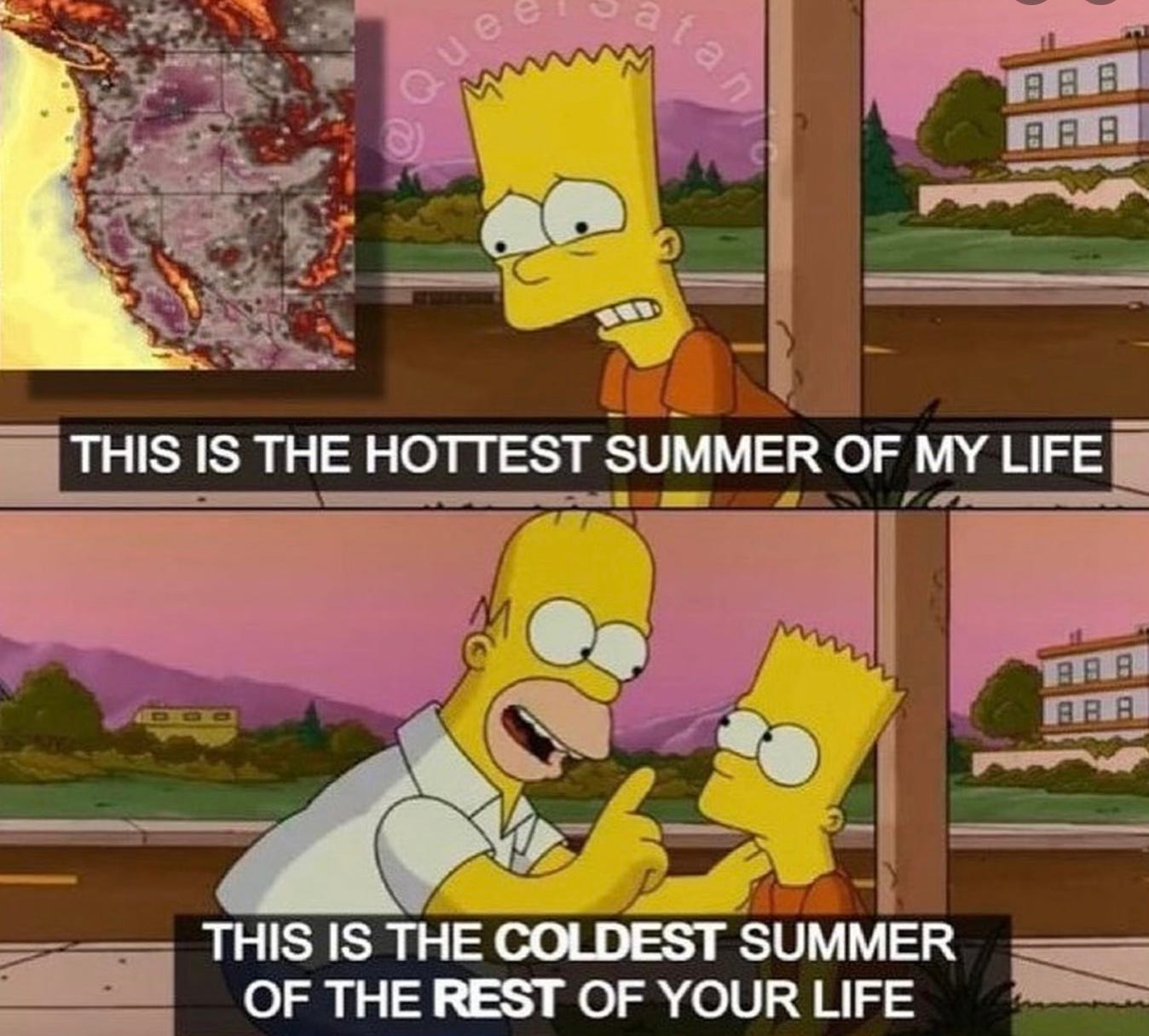Collapse won't be like in the movies
Nope, it will be more of a shittification of all the things. Chapter 15 explains why this might not be so bad.
Last chapter (“Ungrowth”) I introduced the idea of letting go of the growth myth. At the end, I dangled this:
The madness, the wrongness, the untenability of the growth myth is now playing itself out. Growth…just can’t any longer. It can’t stack up. It can’t keep going. It has to crash into limits. Just as we always knew. We won’t have to fight for “ungrowth”, as I prefer to call it. We will be shoved into it.
This chapter will now explore what this looks like and how we might want to ride with it.
If you’re new here you can start at the beginning of the book and navigate around the previous chapters using this Table of Contents. The audio version is at the bottom, available only to paid subscribers. Ditto the conversation in the comments section where we workshop things together in real time.
<Previous Chapter | Table of Contents | Next Chapter>
SIMPLIFY
“The trick is, I find, to tone your wants and tastes low down enough, and make much of negatives, and of mere daylight and the skies.”
- Walt Whitman
*
In the mid-1980s, at the large public high school I attended, we all read Children of the Dust, a dark, dark trilogy about a family trying to survive a nuclear apocalypse. After getting the news alert that bombs had been dropped in Berlin and Leningrad, the kids rush home from school, fill sinks and bathtubs with water and seal the kitchen with plastic sheeting and gaffa tape. Then they wait under the table as a family for the radioactive fall-out to spread out around the globe.
As a kid raised in the shadow of the nuclear arms race, I had a vivid and particular picture of how the end of the world would go (grey, dusty desert scapes; mutant children). In the schoolyard we talked about Ronald Reagan’s “red button”1; I was aware that the British government had in place guidelines for what to do in the event of nuclear attack (again, seal one room of your house; build a shelter inside; don’t come out “until it’s safe”). I developed a similar emergency plan for my family. We were to close off the central hallway and bathroom with the toilet becoming storage for the cans of food that I asked Mum to stockpile2.
Of course, it was the kids of my generation who then grew up to write the dystopian books and make the the apocalyptic movies, the ones depicting lone fathers wandering wastelands with a shopping trolley and end-times dinner parties at which everyone is waits for a comet to strike Earth. There was invariably the one terrifying event, caused by a defined nefarious force. In some cases, a bunch of heroic men3 would set out to save us all, or to enact revenge on our behalf.
But collapse will not be like in the movies. Things won’t end with a bang.
No, they will be shitty4. And then get shittier.
Q: What will collapse – or ungrowth – look like?
It’s another question that burns, or hovers, right? Like, “Will we all die?”, from Chapter 7. We can’t help but ask it.
As I’ve flagged a few times already, I try not to get too caught up in these kinds of questions. The prediction models of the past no longer work; so much complexity renders conclusions absurd. Plus, we are far better off turning our care and attention to living in - and with - the uncertainty.
But, to (reluctantly and very broadly) answer, collapse will mostly look like… now. As in, shitty. And wrong.
Because, let’s say it again, with courage and burgeoning leadership oomph: We are already in collapse. This (wide-sweep of hand) is what collapse looks like.
Collapse looks like the upper-middle class (and people we know) voting for a man who wants to ban Muslims, incited an insurrection and has had 26 women come out publicly accusing him of sexual assault or rape. Historian Edward Watts, author of Mortal Republic: How Rome Fell into Tyranny, explained in this podcast last week that Rome fell when its middle class lost faith in the system and embraced demagoguery. He foresees the same fate for the American “empire”.
It looks like what’s happening in the Middle East. And it looks like a system (or clusterfuck of systems) that can’t (or won’t) do anything to stop the mass slaughter, because to do so would be to topple the precarious post-industrial, colonial, military complex. (And, yet, it will topple; it must.)
Collapse is also news hitting this week that 38 per cent of tree species are about to go extinct, “threatening life as we know it on Earth”, according to a report published by the International Union for Conservation of Nature (IUCN). And it’s no one hearing about it above all the other noise. (If no one hears it, will they still fall?)
Collapse looks like the fertility rate falling below levels where it’s able to come back up again.
It’s billionaires silencing the last remaining reputable media outlets ahead of next week’s US election.
It looks like no one knowing what’s going on nor knowing what to do. It’s not knowing which of your friends you can trust to share your moral values anymore.
It’s the weather not just a “bad patch” that we will “pass-through”, but being really uncomfortable (more than 150 people dying in Spain in the latest flash flood this week), unprecedented and TikTok-able a lot of the time. No, it won’t be getting better. It will just continue to get shittier.
It’s all of these things continuing to get shittier, feeding into each other, and not ever correcting. Although I will add that many commentators argue decline will be punctuated by periods of respite. Substack writer
, writes (quoting shale oil expert Art Berman):“Civilizations, just like oil fields, ‘don’t crash and burn, but follow an undulating path downward over years or decades.’”





